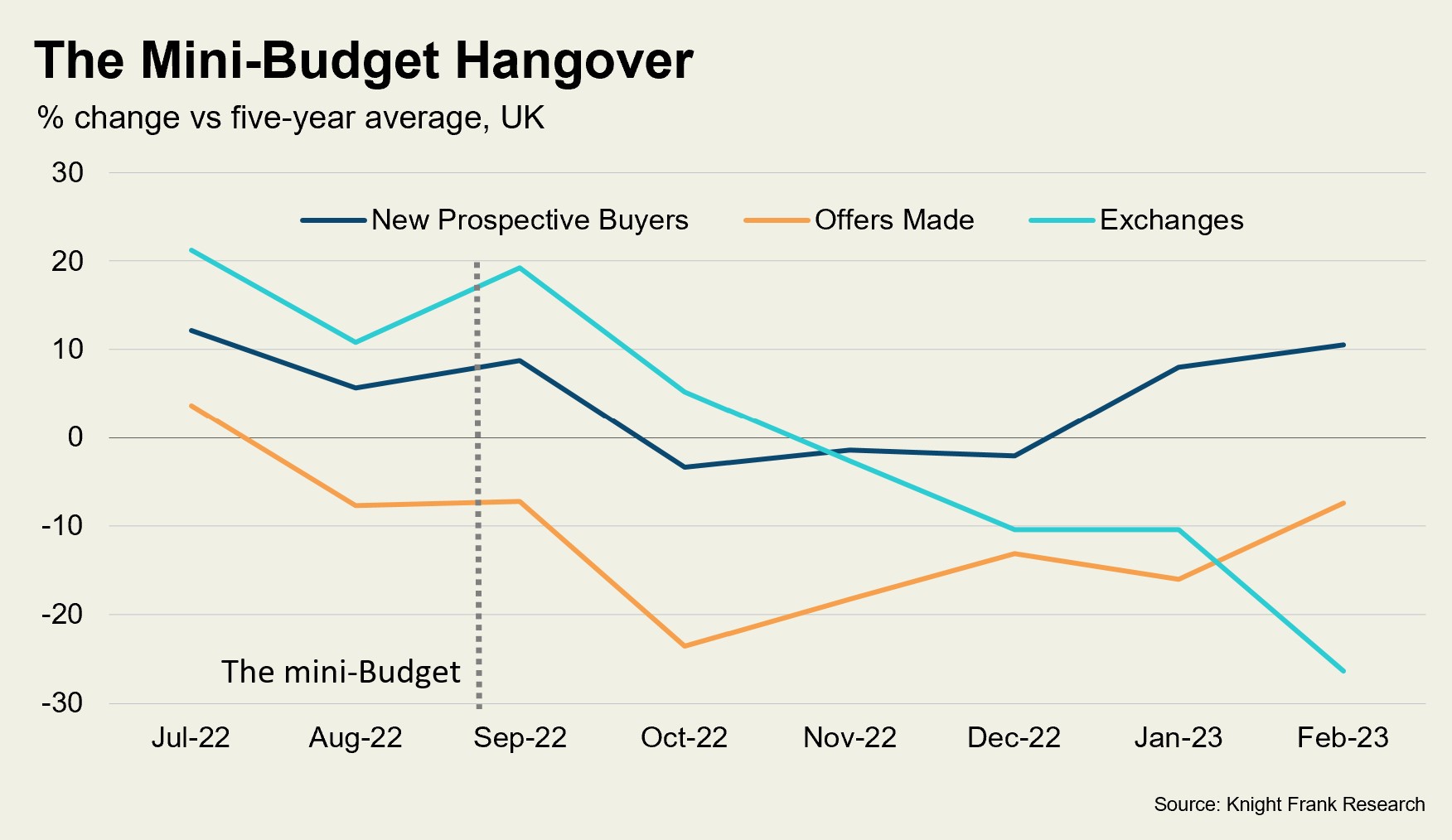UK housing market stirs from its slumber
The data is turning more positive as buyers and sellers prepare for the spring market.
3 minutes to read
The further we get from the mini-Budget, the more things improve in the UK housing market.
Property prices and transaction volumes are not about to surge, but it’s increasingly clear the market is not heading over a cliff.
Mortgage rates spiked after September’s mini-Budget, causing the market to effectively shut down early for Christmas. While mortgage approvals in December and January were predictably weak, that was never likely to set the tone for the rest of the year.
We expect the housing market will be solid but not spectacular in 2023 and further evidence of this came last week.
UK house price growth
First, Halifax said UK prices grew by 2.1% in the year to February after a monthly rise of 1.1%. It wasn’t the first piece of economic data to defy expectations this year.
Two days later, the RICS survey pointed to a more stable market in 2023. Its latest measure of demand was the “least negative result since July 2022”, which nicely encapsulated the current mood of ambiguity ahead of the traditionally busy spring season.
The true test for the market will come over the next few months and based on the current figures, it is likely to pass.

The number of new prospective property buyers that registered in February was 10% above the five-year average in the UK, Knight Frank data shows.
Offers made were down by 7% in the same month but you would expect that gap to close as post-Christmas transactions progress. In another example of the mini-Budget’s legacy, exchanges were down by a quarter in February despite being up by 5% in October.
Mortgage rates settling
Whatever way you cut the data, it tells the story of a market that woke up in January after a three-month slumber.
The anecdotal evidence tells a similar story.
“Most buyers have quickly accepted where mortgage rates are settling,” said Nigel Mitchell, head of the south-east region at Knight Frank. “In a strong market, houses with drawbacks will get competitive bidding but I would describe this as a normal market, so some asking prices will come under pressure as budgets get revised down. However, properties that tick all the boxes are still going for above the asking price.”
The commentary section at the back of the last two RICS reports were full of similar evidence.
And what about mortgage rates, the cause of the hiatus?
Ironically, the poor start to the year could maintain downwards pressure on mortgage rates despite the fact swap rates are rising in response to stronger economic data.
“The big lenders have more flexibility when it comes to pricing mortgage products because they can use their own balance sheet, as opposed to the smaller players that are more reliant on market pricing,” said Simon Gammon, head of Knight Frank Finance. “Given how weak the last two months have been for mortgage approvals, I would expect the larger lenders who have this flexibility to focus on increasing market share and vying to be top of the leader board for the lowest rates.”
Smaller lenders are more likely to compete through product innovation and making changes to their underwriting criteria, said Simon.
“It will be tougher for them, but they can do things like relaxing their lending rules or going into new markets. Overall, I expect things will improve for borrowers but not by much, we are in a new normal and lenders of all sizes will essentially be tinkering around the edges.”
After a chaotic final few months in 2022, when lenders pulled more than 40% of their mortgage products from the market, the fact they are only tinkering will be welcome news.